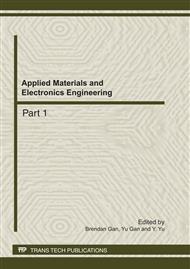p.85
p.90
p.94
p.98
p.102
p.108
p.112
p.116
p.121
Behavior of FRP Sandwich Panels under Synergistic Effects of Low Temperature and Cyclic Loading I: Experiment and Numerical Simulation Method
Abstract:
The paper is concerned with using experiments and numerical simulations to study the mechanical performance of a Honeycomb Fiber-Reinforced Polymer (HFRP) sandwich panel at different temperatures, especially at low temperatures coupled with cyclic loadings. All physical tests were performed in a temperature controlled room and used a three-point bending setup where the applied load gradually increased from zero to 36kN. Experimental results show that the stiffness of the panel becomes softer at some lower temperatures. In order to eliminate the influence of the initial conditions, an incremental method was introduced to process the experimental results. This method treated all displacements and strains as zero when applying a load of 4.5kN. Furthermore, the change in stiffness of the panel was obtained through the use of a special equivalent stiffness which involved measuring the change of the stiffness of the panel. After comparing different methods, the composite shell method was used to build finite element models for numerical simulations in ABAQUS. Reduction of moduli and Random Mesh Size Method (RMSM) were employed to simulate microcracking between fibers and matrix and debonding between the core and face sheets, respectively.
Info:
Periodical:
Pages:
102-107
Citation:
Online since:
October 2011
Authors:
Price:
Сopyright:
© 2012 Trans Tech Publications Ltd. All Rights Reserved
Share:
Citation:


